GE 27.0 cu. ft. French Door Refrigerator in Fingerprint Resistant Stainless Steel, ENERGY STAR
Equipped with a quick space shelf for added storage. Spill-proof shelves provide easy clean up. Food stays fresh with turbo cool setting.
At GE Appliances, we bring good things to life, by designing and building the world’s best appliances. Our goal is to help people improve their lives at home by providing quality appliances that were made for real life. Whether it’s enjoying the tradition of making meals from scratch or tackling a mountain of muddy jeans and soccer jerseys, GE Appliances are crafted to support any and every task in the home.
-
Fingerprint resistant stainless – Easily wipe away smudges and fingerprints for a look that’s always sparkling clean
- 27.0 cu. ft. capacity – Easily store large or bulk food items with three full-width shelves and large capacity
- Internal water dispenser – Delivers filtered water with one touch
- Factory-installed icemaker with water filtration system – Refrigerator comes ready to automatically create filtered ice
- LED lighting – Find exactly what you’ve been looking for under crisp, clear lighting
- Spill-proof shelves – A variety of shelf configurations provide additional options for food storage
- Two humidity-controlled drawers and full-width drawer – Create the right environment for keeping fruits and vegetables fresh, while easily storing wider items like a party platter or a sheet cake
- Quick Space shelf – Quickly slides out of the way to make room for tall items
- Turbo Cool and Turbo Freeze settings – An extra boost of cold air restores interior to set temperature for optimum food freshness
- Internal controls with actual-temperature display – Eliminate the guesswork of temperature setting with actual degrees displayed digitally
- Advanced water filtration uses XWF replacement filter – Reduces trace pharmaceuticals from water and ice ( Removes 98% of ibuprofen, atenolol, fluoxetine, progesterone and trimethoprim. These pharmaceuticals are not necessarily in all users’ water
- Gallon door storage – Deep bins handle large containers in the door and free up valuable shelf space
- 2-level freezer storage baskets – Baskets allow easy access to frozen foods
- Door alarm – Enjoy peace of mind knowing the refrigerator door is never left open
- Approximate Dimensions (in.) – 69-7/8 in. H x 35-3/4 in. W x 35-7/8 in. D
- Limited 1-year entire appliance warranty
Additional information
| Product Depth x Height x Width (in.) | 35.88 x 69.88 x 35.75 |
|---|---|
| Refrigerator Width (In.) | 35.75 |
| Depth (Excluding Handles) | 33.38 |
| Depth (Including Handles) | 35.88 |
| Depth With Door Open 90 Degrees (In) | 43.75 |
| Height to Top of Door Hinge (in.) | 69.88 |
| Height to Top of Refrigerator (in.) | 68.63 |
| Certifications and Listings | Energy Star,UL Listed |
| Manufacturer Warranty | Limited 1-year entire appliance warranaty |
0 (zero) is a number representing an empty quantity. Adding 0 to any number leaves that number unchanged. In mathematical terminology, 0 is the additive identity of the integers, rational numbers, real numbers, and complex numbers, as well as other algebraic structures. Multiplying any number by 0 has the result 0, and consequently, division by zero has no meaning in arithmetic.
As a numerical digit, 0 plays a crucial role in decimal notation: it indicates that the power of ten corresponding to the place containing a 0 does not contribute to the total. For example, "205" in decimal means two hundreds, no tens, and five ones. The same principle applies in place-value notations that uses a base other than ten, such as binary and hexadecimal. The modern use of 0 in this manner derives from Indian mathematics that was transmitted to Europe via medieval Islamic mathematicians and popularized by Fibonacci. It was independently used by the Maya.
Common names for the number 0 in English include zero, nought, naught (), and nil. In contexts where at least one adjacent digit distinguishes it from the letter O, the number is sometimes pronounced as oh or o (). Informal or slang terms for 0 include zilch and zip. Historically, ought, aught (), and cipher have also been used.
27 may refer to:
- 27 (number), the natural number following 26 and preceding 28
- one of the years 27 BC, AD 27, 1927, 2027
A door is a hinged or otherwise movable barrier that allows ingress (entry) into and egress (exit) from an enclosure. The created opening in the wall is a doorway or portal. A door's essential and primary purpose is to provide security by controlling access to the doorway (portal). Conventionally, it is a panel that fits into the doorway of a building, room, or vehicle. Doors are generally made of a material suited to the door's task. They are commonly attached by hinges, but can move by other means, such as slides or counterbalancing.
The door may be able to move in various ways (at angles away from the doorway/portal, by sliding on a plane parallel to the frame, by folding in angles on a parallel plane, or by spinning along an axis at the center of the frame) to allow or prevent ingress or egress. In most cases, a door's interior matches its exterior side. But in other cases (e.g., a vehicle door) the two sides are radically different.
Many doors incorporate locking mechanisms to ensure that only some people can open them (such as with a key). Doors may have devices such as knockers or doorbells by which people outside announce their presence. (In some countries, such as Brazil, it is customary to clap from the sidewalk to announce one's presence.) Apart from providing access into and out of a space, doors may have the secondary functions of ensuring privacy by preventing unwanted attention from outsiders, of separating areas with different functions, of allowing light to pass into and out of a space, of controlling ventilation or air drafts so that interiors may be more effectively heated or cooled, of dampening noise, and of blocking the spread of fire.
Doors can have aesthetic, symbolic, ritualistic purposes. Receiving the key to a door can signify a change in status from outsider to insider. Doors and doorways frequently appear in literature and the arts with metaphorical or allegorical import as a portent of change.
A fingerprint is an impression left by the friction ridges of a human finger. The recovery of partial fingerprints from a crime scene is an important method of forensic science. Moisture and grease on a finger result in fingerprints on surfaces such as glass or metal. Deliberate impressions of entire fingerprints can be obtained by ink or other substances transferred from the peaks of friction ridges on the skin to a smooth surface such as paper. Fingerprint records normally contain impressions from the pad on the last joint of fingers and thumbs, though fingerprint cards also typically record portions of lower joint areas of the fingers.
Human fingerprints are detailed, nearly unique, difficult to alter, and durable over the life of an individual, making them suitable as long-term markers of human identity. They may be employed by police or other authorities to identify individuals who wish to conceal their identity, or to identify people who are incapacitated or deceased and thus unable to identify themselves, as in the aftermath of a natural disaster.
Their use as evidence has been challenged by academics, judges and the media. There are no uniform standards for point-counting methods, and academics have argued that the error rate in matching fingerprints has not been adequately studied and that fingerprint evidence has no secure statistical foundation. Research has been conducted into whether experts can objectively focus on feature information in fingerprints without being misled by extraneous information, such as context.
French may refer to:
- Something of, from, or related to France
- French language, which originated in France
- French people, a nation and ethnic group
- French cuisine, cooking traditions and practices
A refrigerator, colloquially fridge, is a commercial and home appliance consisting of a thermally insulated compartment and a heat pump (mechanical, electronic or chemical) that transfers heat from its inside to its external environment so that its inside is cooled to a temperature below the room temperature. Refrigeration is an essential food storage technique around the world. The low temperature lowers the reproduction rate of bacteria, so the refrigerator reduces the rate of spoilage. A refrigerator maintains a temperature a few degrees above the freezing point of water. The optimal temperature range for perishable food storage is 3 to 5 °C (37 to 41 °F). A similar device that maintains a temperature below the freezing point of water is called a freezer. The refrigerator replaced the icebox, which had been a common household appliance for almost a century and a half. The United States Food and Drug Administration recommends that the refrigerator be kept at or below 4 °C (40 °F) and that the freezer be regulated at −18 °C (0 °F).
The first cooling systems for food involved ice. Artificial refrigeration began in the mid-1750s, and developed in the early 1800s. In 1834, the first working vapor-compression refrigeration, using the same technology seen in air conditioners, system was built. The first commercial ice-making machine was invented in 1854. In 1913, refrigerators for home use were invented. In 1923 Frigidaire introduced the first self-contained unit. The introduction of Freon in the 1920s expanded the refrigerator market during the 1930s. Home freezers as separate compartments (larger than necessary just for ice cubes) were introduced in 1940. Frozen foods, previously a luxury item, became commonplace.
Freezer units are used in households as well as in industry and commerce. Commercial refrigerator and freezer units were in use for almost 40 years prior to the common home models. The freezer-over-refrigerator style had been the basic style since the 1940s, until modern, side-by-side refrigerators broke the trend. A vapor compression cycle is used in most household refrigerators, refrigerator–freezers and freezers. Newer refrigerators may include automatic defrosting, chilled water, and ice from a dispenser in the door.
Domestic refrigerators and freezers for food storage are made in a range of sizes. Among the smallest are Peltier-type refrigerators designed to chill beverages. A large domestic refrigerator stands as tall as a person and may be about one metre (3 ft 3 in) wide with a capacity of 0.6 m3 (21 cu ft). Refrigerators and freezers may be free standing, or built into a kitchen. The refrigerator allows the modern household to keep food fresh for longer than before. Freezers allow people to buy perishable food in bulk and eat it at leisure, and make bulk purchases.
Stainless may refer to:
- Cleanliness, or the quality of being clean
- Stainless steel, a corrosion-resistant metal alloy
- Stainless Games, a British video game developer
- Stainless Broadcasting Company, a TV broadcaster based in Michigan, US
- Stainless Banner, the second national flag of the Confederate States of America
Steel is an alloy of iron and carbon with improved strength and fracture resistance compared to other forms of iron. Because of its high tensile strength and low cost, steel is one of the most commonly manufactured materials in the world. Steel is used in buildings, as concrete reinforcing rods, in bridges, infrastructure, tools, ships, trains, cars, bicycles, machines, electrical appliances, furniture, and weapons.
Iron is always the main element in steel, but many other elements may be present or added. Stainless steels, which are resistant to corrosion and oxidation, typically need an additional 11% chromium.
Iron is the base metal of steel. Depending on the temperature, it can take two crystalline forms (allotropic forms): body-centred cubic and face-centred cubic. The interaction of the allotropes of iron with the alloying elements, primarily carbon, gives steel and cast iron their range of unique properties. In pure iron, the crystal structure has relatively little resistance to the iron atoms slipping past one another, and so pure iron is quite ductile, or soft and easily formed. In steel, small amounts of carbon, other elements, and inclusions within the iron act as hardening agents that prevent the movement of dislocations.
The carbon in typical steel alloys may contribute up to 2.14% of its weight. Varying the amount of carbon and many other alloying elements, as well as controlling their chemical and physical makeup in the final steel (either as solute elements, or as precipitated phases), impedes the movement of the dislocations that make pure iron ductile, and thus controls and enhances its qualities. These qualities include the hardness, quenching behaviour, need for annealing, tempering behaviour, yield strength, and tensile strength of the resulting steel. The increase in steel's strength compared to pure iron is possible only by reducing iron's ductility.
Steel was produced in bloomery furnaces for thousands of years, but its large-scale, industrial use began only after more efficient production methods were devised in the 17th century, with the introduction of the blast furnace and production of crucible steel. This was followed by the Bessemer process in England in the mid-19th century, and then by the open-hearth furnace. With the invention of the Bessemer process, a new era of mass-produced steel began. Mild steel replaced wrought iron. The German states were the major steel producers in Europe in the 19th century. American steel production was centered in Pittsburgh, Bethlehem, Pennsylvania, and Cleveland until the late 20th century.
Further refinements in the process, such as basic oxygen steelmaking (BOS), largely replaced earlier methods by further lowering the cost of production and increasing the quality of the final product. Today more than 1.6 billion tons of steel is produced annually. Modern steel is generally identified by various grades defined by assorted standards organizations. The modern steel industry is one of the largest manufacturing industries in the world, but also one of the most energy and greenhouse gas emission intense industries, contributing 8% of global emissions. However, steel is also very reusable: it is one of the world's most-recycled materials, with a recycling rate of over 60% globally.

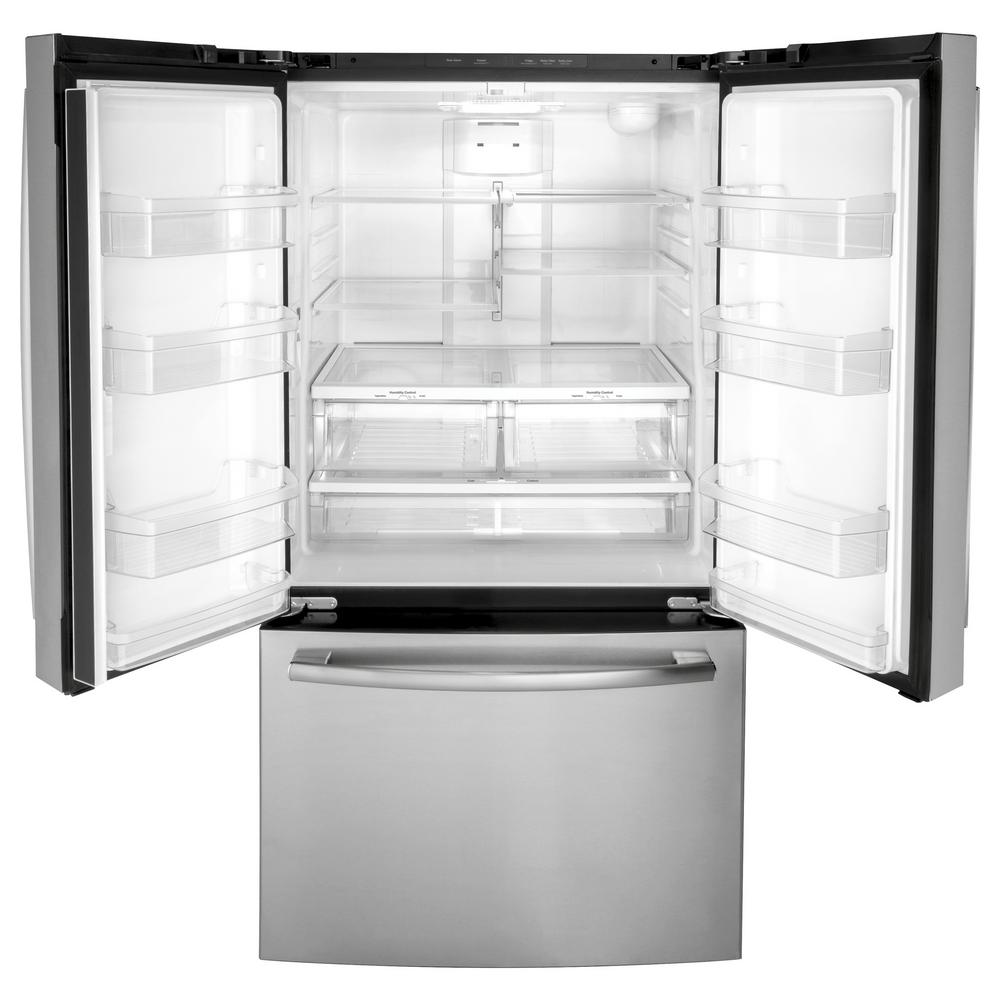
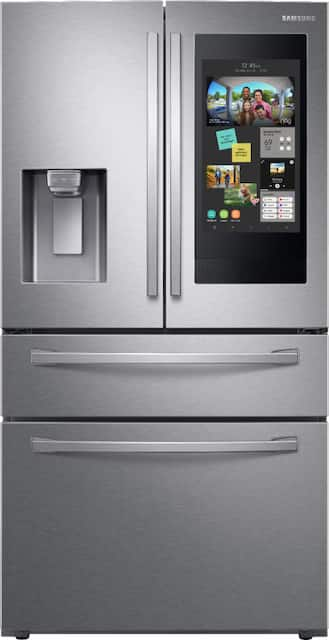
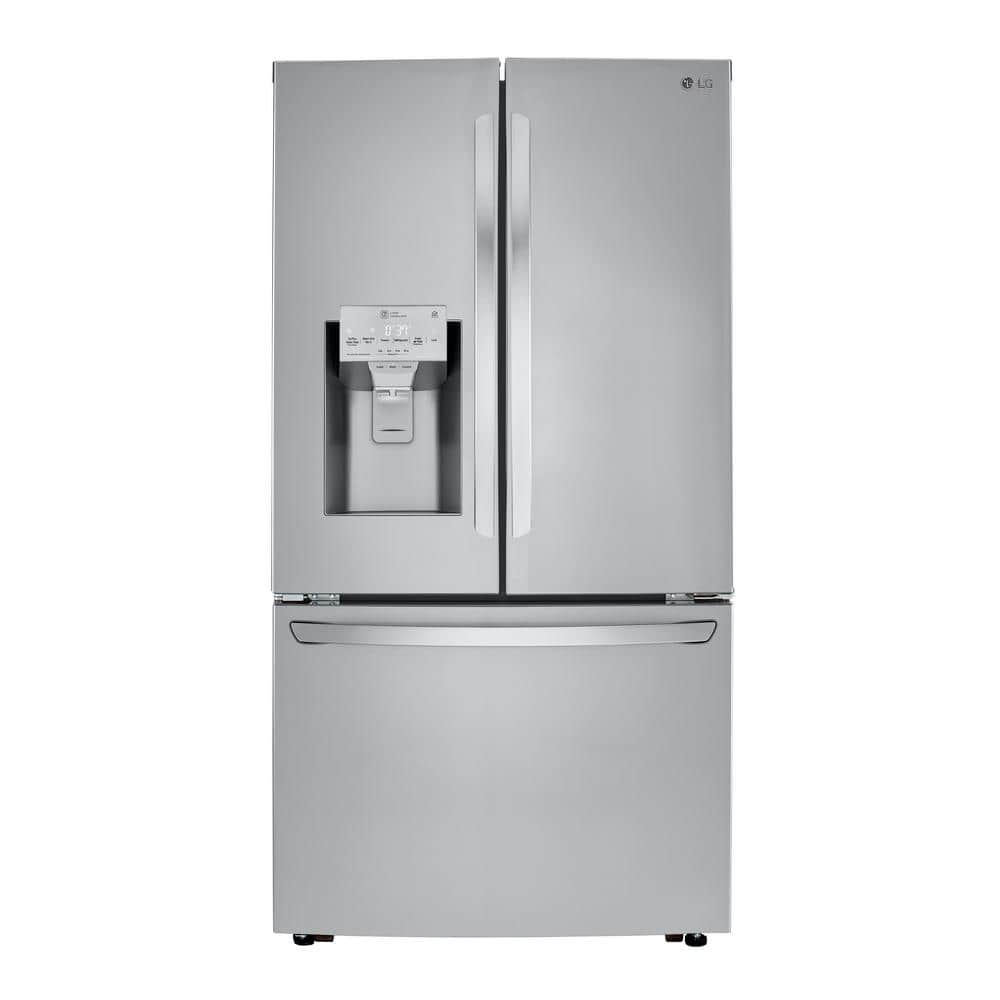
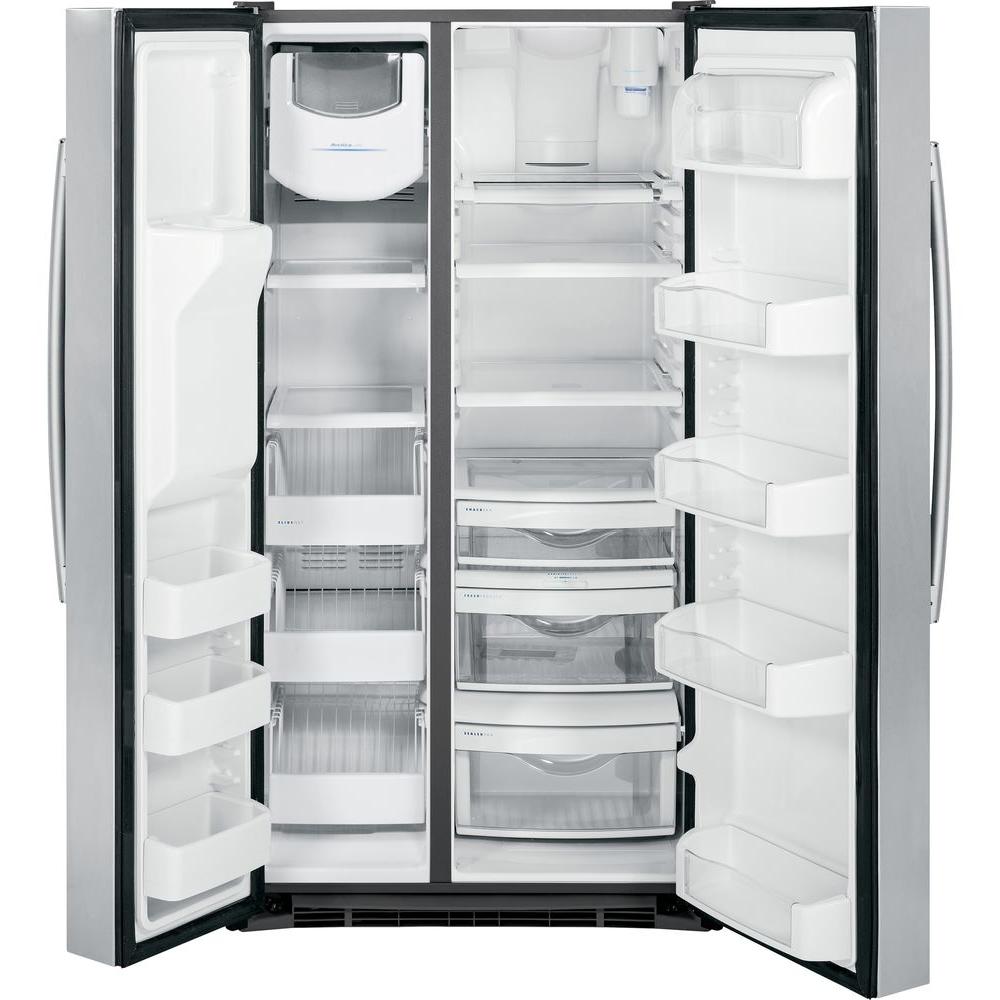
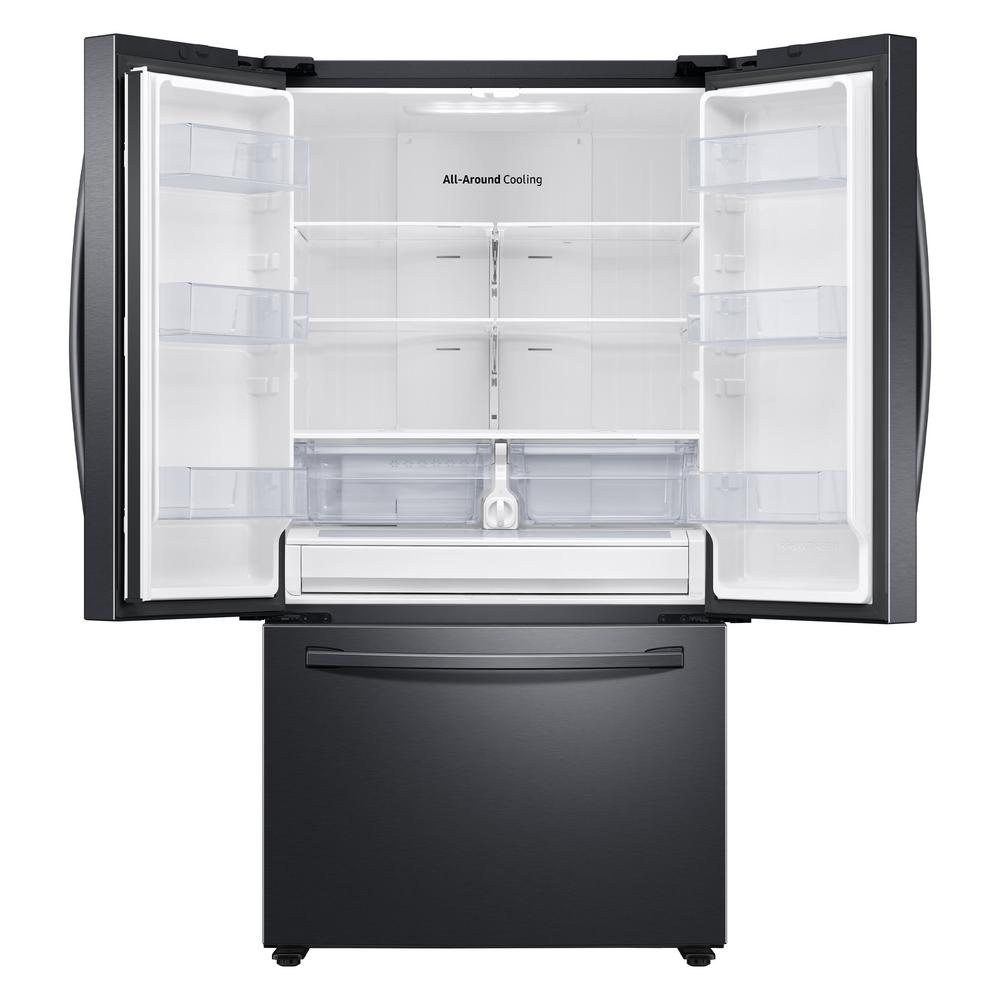
by Mee
I love that this has the water dispenser on the inside and plenty of room and shelves with multiple configurations for all of my needs.
by Russell
Love how it looks in my kitchen. Works very well in my kitchen.
by Maria
Love my new refrigerator! Much improved features and just like the previous GE Profile refrigerator, I know I will enjoy this refrigerator for more than 10 years.
by Jay
Great fridge with lots of room. Works perfectly. Couldn’t be more happy with it.
by Hiker
We replaced our side by side with this French door model and couldn’t be happier. Great capacity and seems to be solidly built
by Kahn
The cubic feet listed for this refrigerator is no joke; it has so much room to store your products. The side compartments are much bigger than they look; the product photos are true to their word. The freezer also has a lot of room and my wife and I love that it pulls out. If you’re looking for a freezer without the water and ice dispenser on the front, this is the one to get without a doubt.
by John
Is deep to put a lot of groceries I love it and I would buy it again.
by Tony
Just delivered and it is awesome! Water dispenser in hidden so we have more room inside! Makes ice too!!!
by Nessa
We replaced a side by side that we’ve had for almost 10 years and couldn’t be happier. Love the adjustable shelving and the sliding half shelf to allow for taller items. Super quiet, like the water dispenser tucked inside the door, and the ice maker works well too. The only negative, if you can call it one, is the big “deli drawer” at the bottom feels a little cheap and doesn’t slide very smoothly. But overall very happy.
by Praise
So roomy, love the fingerprint resistant a lot of room inside